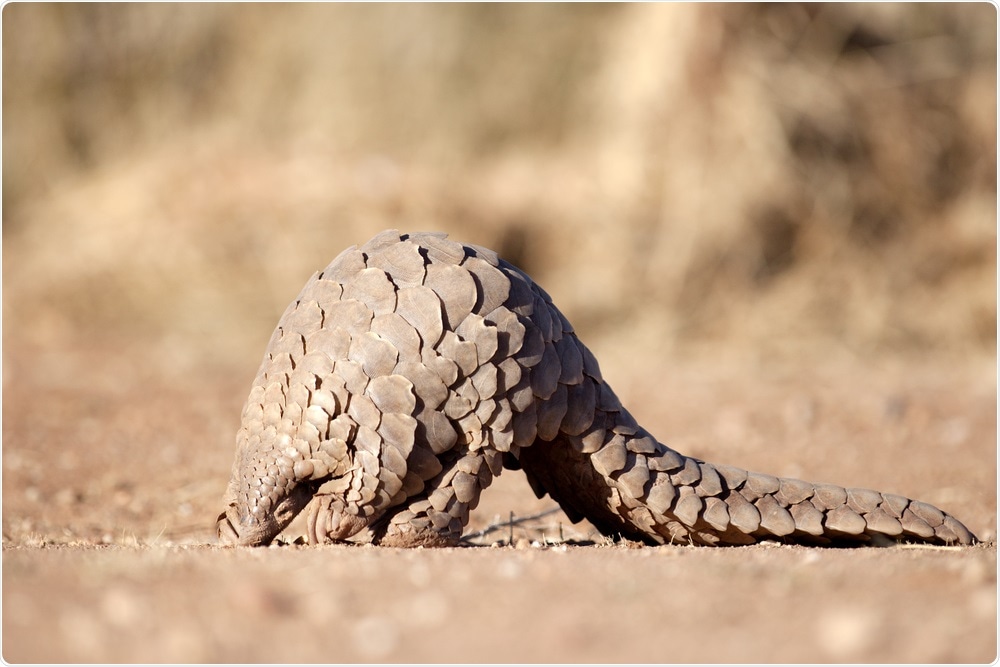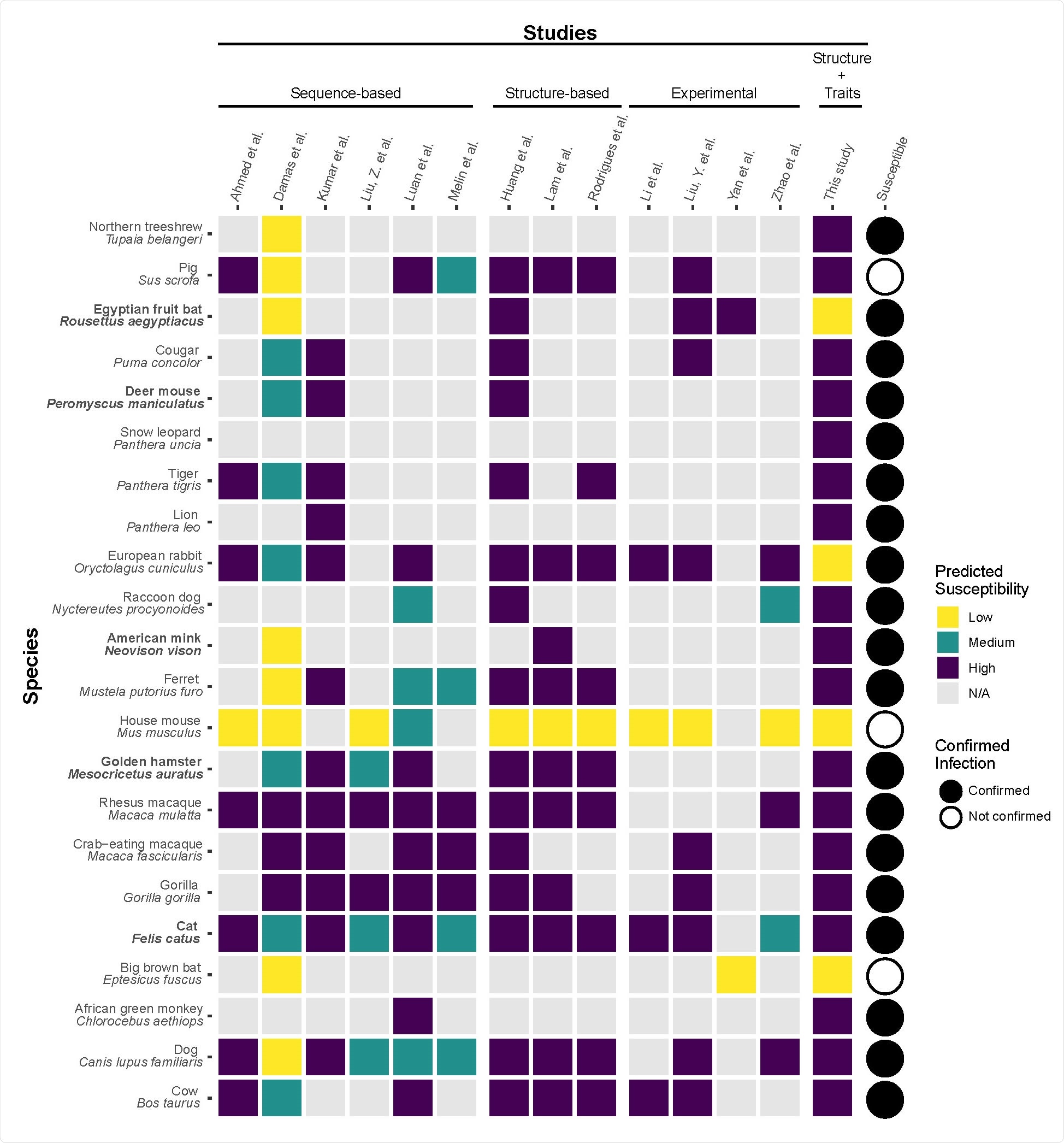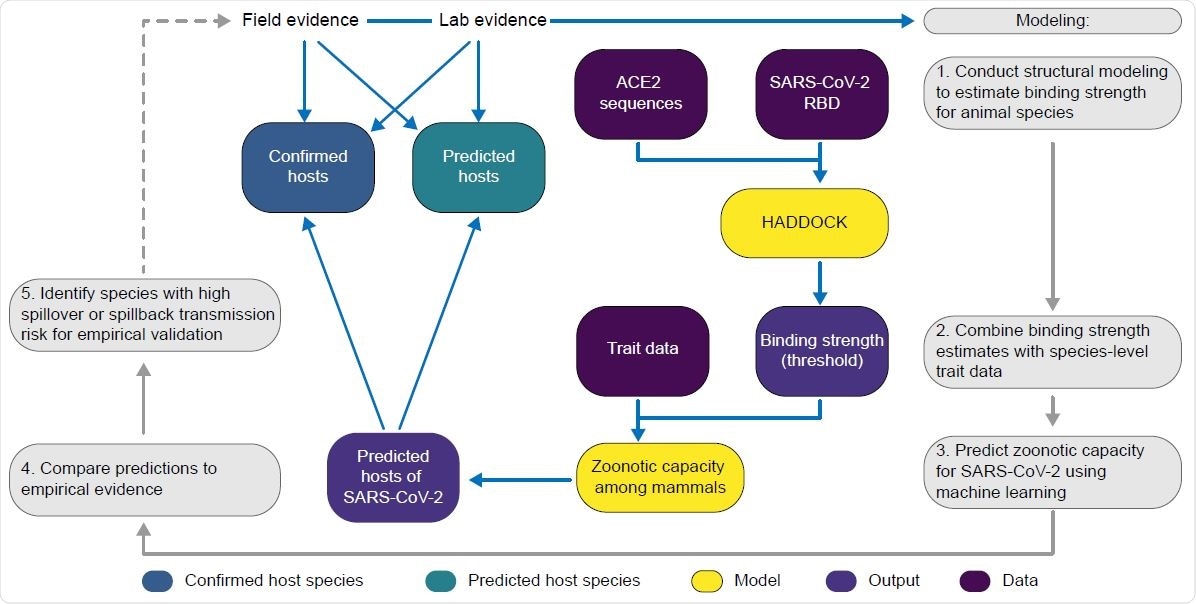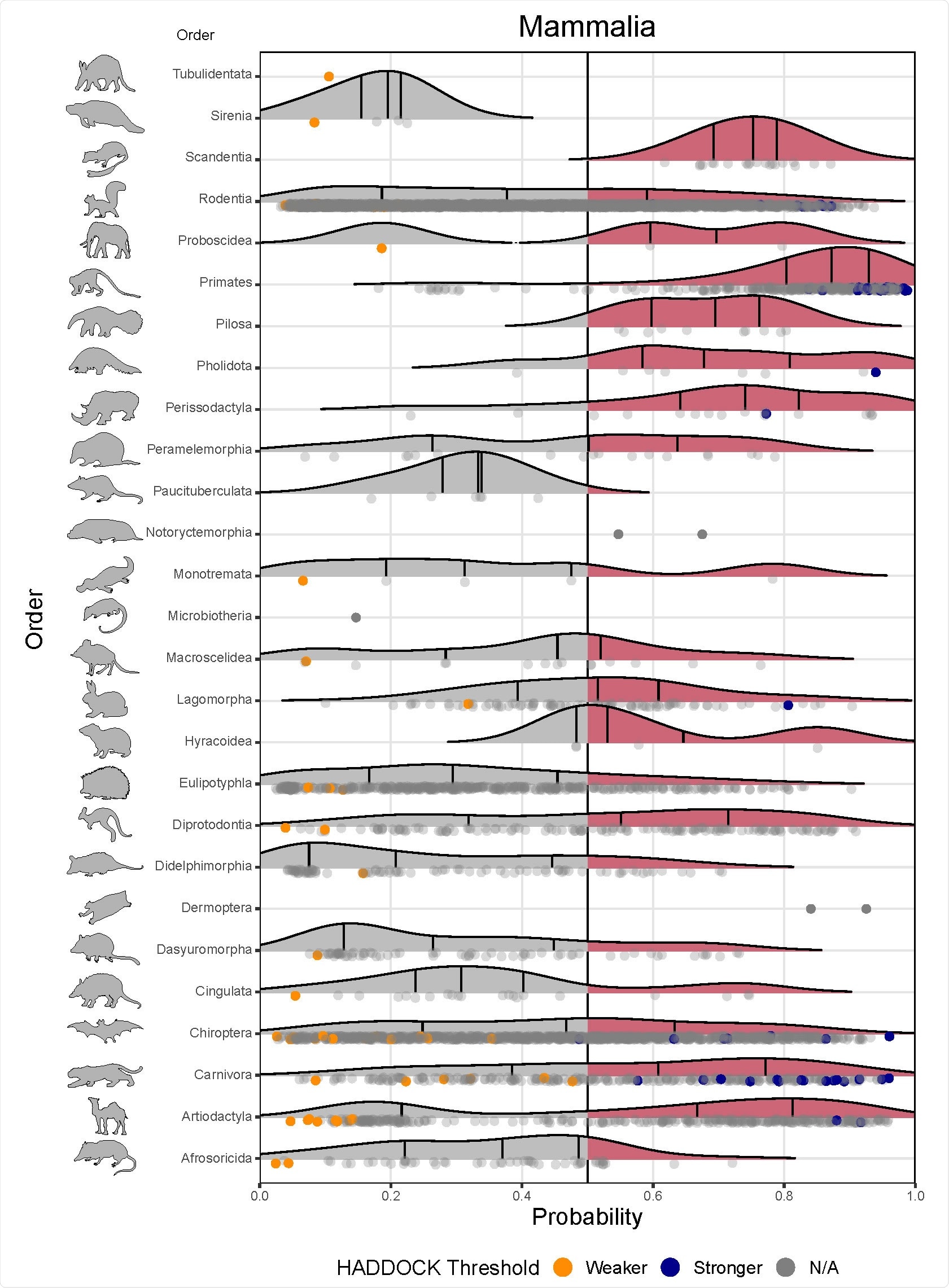Scientists worldwide are fighting to contain the ongoing COVID-19 pandemic, which has already claimed more than 2.48 million lives. Preventing spillback infections is essential to containing the pandemic. To do so, it is vital to understand the nature of the virus, i.e., its susceptibility to a range of hosts.

Like previous disease outbreak episodes, SARS-CoV-2 originated from the spillover of a zoonotic pathogen. This virus's high transmission rate is attributed to its capability to use a highly conserved cell surface receptor, angiotensin-converting enzyme 2 (ACE2), to enter the host cell.
The ACE2 protein is predominantly present on the cell surface of all major vertebrate groups. The high rate of spillback infections in the past year can be explained by the simultaneous occurrence of three factors – (a) a high human population, (b) high infection potential of SARS-CoV-2, and (c) the ubiquitous nature of the ACE2 receptor.
Now, a new study, published on the bioRxiv* preprint server, has revealed the importance of spillback infections during pandemics. During spillback infections, the SARS-CoV-2 virus was observed to have been transmitted from humans (host) to other mammals. Such spillback infections may lead to the establishment of a new host (animals), which may act as a virus reservoir. These animals may, subsequently, cause a secondary spillover to humans.

Such an occurrence was found in Denmark and in the Netherlands, where SARS-CoV-2 was transmitted from humans to farmed mink, and afterward, a variant of the virus was transmitted back from the mink to humans.
The secondary spillover poses a significant threat as it generates mutant strains. A variety of pets, farmed animals, etc., are reported as new hosts of SARS-CoV-2. The emergent strains may be more virulent than the existing ones. A prior study of the recent spillover event has revealed that the mink-derived variant can decrease sensitivity to neutralizing antibodies. This indicates that the efficacy of vaccines may also take a toll.

Scientists have carried out various computational studies to make valid predictions about non-human animals susceptible to SARS-CoV-2. To this end, both comparative models of ACE2 orthologs sequences among various species and structure-based models of the viral spike protein bound to ACE2 orthologs were used.
The current study develops a new model by combining structure-based inference with species-level trait data. This would help predict the zoonotic capacity of different animal species in becoming zoonotic hosts of SARS CoV-2.

To enhance the predictive capacity of the models across species, scientists have incorporated intrinsic biological traits of ~5400 mammal species in their study.
In the course of model development, several factors that are associated with species susceptibility to SARS-CoV-2 were considered, for example, the binding strength between SARS-CoV-2 receptor binding domain and host ACE2. The combined modeling system has helped increase the accuracy percentage of prediction of zoonotic capacity to 72%.
The model has predicted a high SARS-CoV-2 zoonotic capacity for many domesticated, farmed, and live traded animal species. For example, among all livestock, Bubalus bubalis (water buffalo) was predicted to have a high zoonotic capacity. Some of the other species that showed a high percentage of zoonotic capacity are rats, rodents, and bats. Endangered species such as mountain gorillas and addax also have a high zoonotic capacity, thereby putting the individuals directly involved in active conservation management at greater risk of spillback transmission. The model has also helped to identify various other animal species that can act as hosts to SARS-CoV-2.
Despite a high level of agreement between these models and empirical studies' predictions, some differences remain between the computational results and the actual experiments, including animals. As an example, several computational predictions suggested that Sus scrofa (pigs) show susceptibility to SARS-CoV-2, but this result did not hold up in animal-based experiments.
Scientists believe that the disagreement between the real-world observations and in silico predictions of zoonotic capacity stems from the fact that the host susceptibility and transmission capacity are not the sole determinants. Transmission of the virus also depends upon the host's cellular environments, i.e., host immunogenicity, protein receptors, etc., where the virus's replication takes place. Further, other challenges such as limitations in the ACE2 sequences and species trait data also aid in predicting error.

Therefore, researchers have recommended that a single methodology is not sufficient to predict the zoonotic capacity of SARS-CoV-2. The zoonotic predictive capacity could be increased by assessing the results obtained from combining theoretical models, statistical models, laboratory experiments, and real-world observations.
*Important Notice
bioRxiv publishes preliminary scientific reports that are not peer-reviewed and, therefore, should not be regarded as conclusive, guide clinical practice/health-related behavior, or treated as established information.
- Predicting the zoonotic capacity of mammal species for SARS-CoV-2 Ilya R. Fischhoff, Adrian A. Castellanos, João P.G.L.M. Rodrigues, Arvind Varsani, Barbara A. Han bioRxiv 2021.02.18.431844; doi: https://doi.org/10.1101/2021.02.18.431844, https://www.biorxiv.org/content/10.1101/2021.02.18.431844v1
Posted in: Medical Science News | Medical Research News | Disease/Infection News
Tags: ACE2, Angiotensin, Angiotensin-Converting Enzyme 2, Antibodies, Cell, Coronavirus Disease COVID-19, Efficacy, Enzyme, in vivo, Laboratory, Machine Learning, Pandemic, Pathogen, Protein, Receptor, Research, SARS, SARS-CoV-2, Spike Protein, Supplements, Virus

Written by
Dr. Priyom Bose
Priyom holds a Ph.D. in Plant Biology and Biotechnology from the University of Madras, India. She is an active researcher and an experienced science writer. Priyom has also co-authored several original research articles that have been published in reputed peer-reviewed journals. She is also an avid reader and an amateur photographer.
Source: Read Full Article